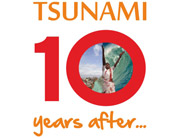|

The world’s most powerful earthquake in more than 40 years struck deep under the Indian Ocean on December 26th, 2004, triggering massive Tsunami’s that caused havoc and massive destruction, killing tens of thousands of people in a dozen countries. The tidal wave hit the Indian UT’s & states of Andaman and Nicobar Islands, Tamil Nadu and Andhra Pradesh. The high waves measuring 2-3 metres appeared suddenly and swept away many people who could not run to safety. In all, 16,000 people were killed and more than 2.7 million people were affected. Livelihoods were lost, people lost near and dear ones, and for most of those affected it was like having to begin life again from scratch. As auxiliary to the Government, the Indian Red Cross through its Branches, National Headquarters and partners like the Spanish Red Cross and the Hong Kong Red Cross helped people in need with shelters, clothes, First Aid and other essential life support. Around 10,000 Red Cross volunteers reached out to more than 5,00,000 people.
As a learning and evaluation exercise, the Indian Red Cross carried out scientific studies to assess impact of its intervention. These studies and papers are placed below. Also as an outcome of these studies, many more interventions were planned and executed in phases. The Spanish Red Cross supported the IRCS interventions till March 2013 for fisherwomen in districts of Andhra Pradesh as they were found to be the most vulnerable and least supported. The Canadian Red Cross supported IRCS in preparedness and resilience building measures for communities in Tamil Nadu and Andhra Pradesh. These programmes IPCD and CBDRR run till March 2015. A team was sent to the Tsunami affected villages in Andhra Pradesh, which were supported and covered under all the interventions and comprise of the most vulnerable of the lot. Their stories are also placed below.
SG’s Message on the 10th anniversary of the Indian Ocean Tsunami
1. Published paper by IRCS
2. Fishing Sustainable Livelihood |